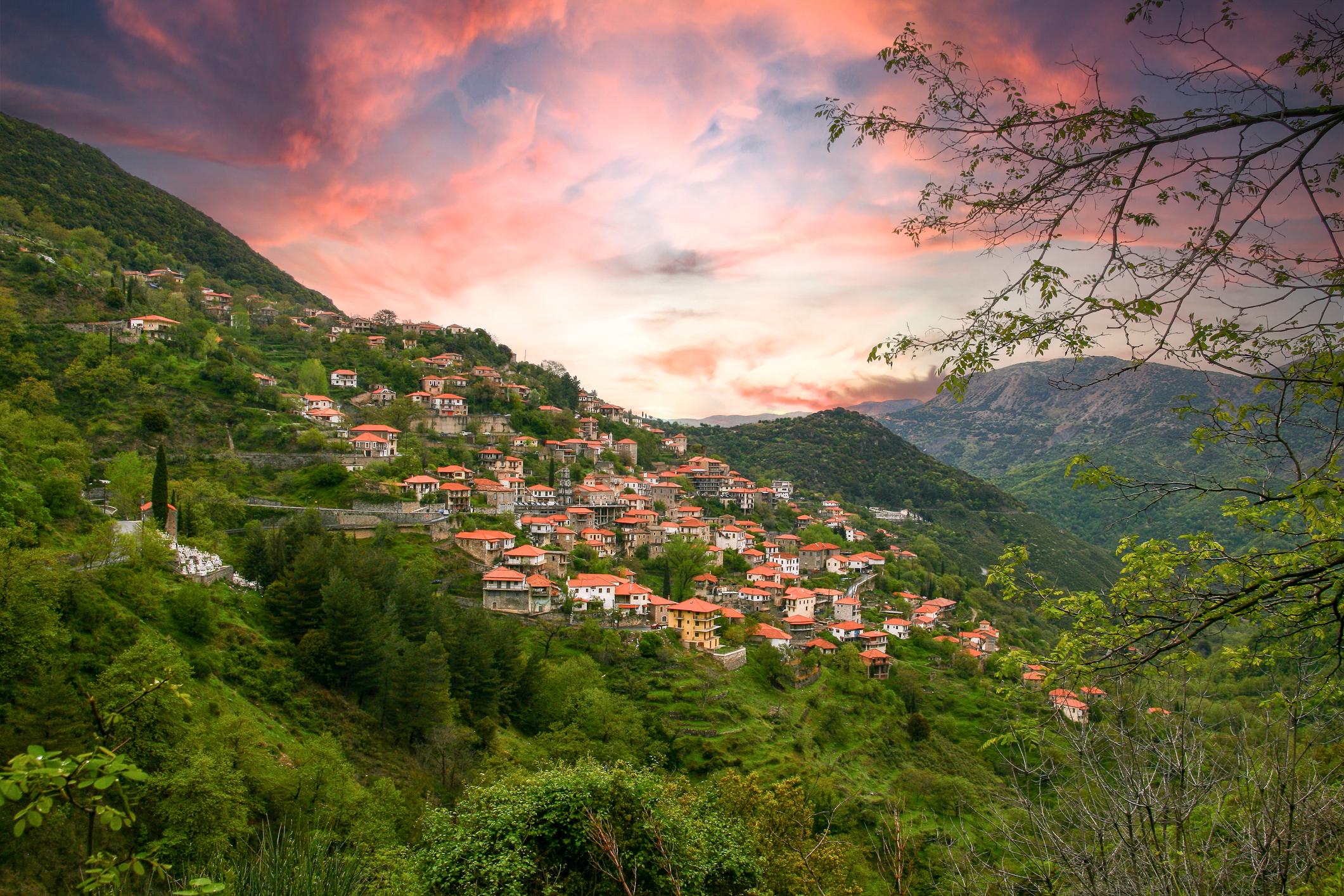The Menalon Trail is a 46.6-mile (75km) hiking route through the western section of Arcadia, a storied region on the Peloponnese peninsula in southern Greece. It is a walk of steep stone villages, of olive groves and vineyards, dense fir forests and rugged limestone mountains.
Along the way lies some of the richest history in Europe. There are Byzantine fortresses, water mills which made the gunpowder which fuelled the Greek Revolution - and tales from Greek mythology which shaped our world today.
Silversmiths still sculpt candlesticks by hand, and each village feels like another discovered secret.
Arcadia takes its name from Arcas, who in Greek mythology was the son of Zeus and Callisto. Arcas was a hunter who became the king of the region, but Arcadia was also said to be home to two of the ancient gods - the mythical messenger Hermes and, notably, Pan, the faun-like god of the forests, of shepherds and of the wild. Pan was said to have the legs of a goat and the body of a human.
This region was described in ancient texts as a virgin wilderness; a paradise with a court of dryads and nymphs. Back in the real world, this seeped through. Arcadia became a common point of reference for pure, unspoiled beauty in Renaissance art, immortalised by the likes of Nicolas Poussin and Jacopo Sannazaro. And the harmonious wilderness that inspired such artists is the same beauty that makes the area so sublime to hike through in the modern day.

At times, walking through Arcadia - where shepherds call for their sheep, silversmiths still sculpt candlesticks by hand, and each village feels like another discovered secret - can feel like you’ve walked back in time a thousand years.
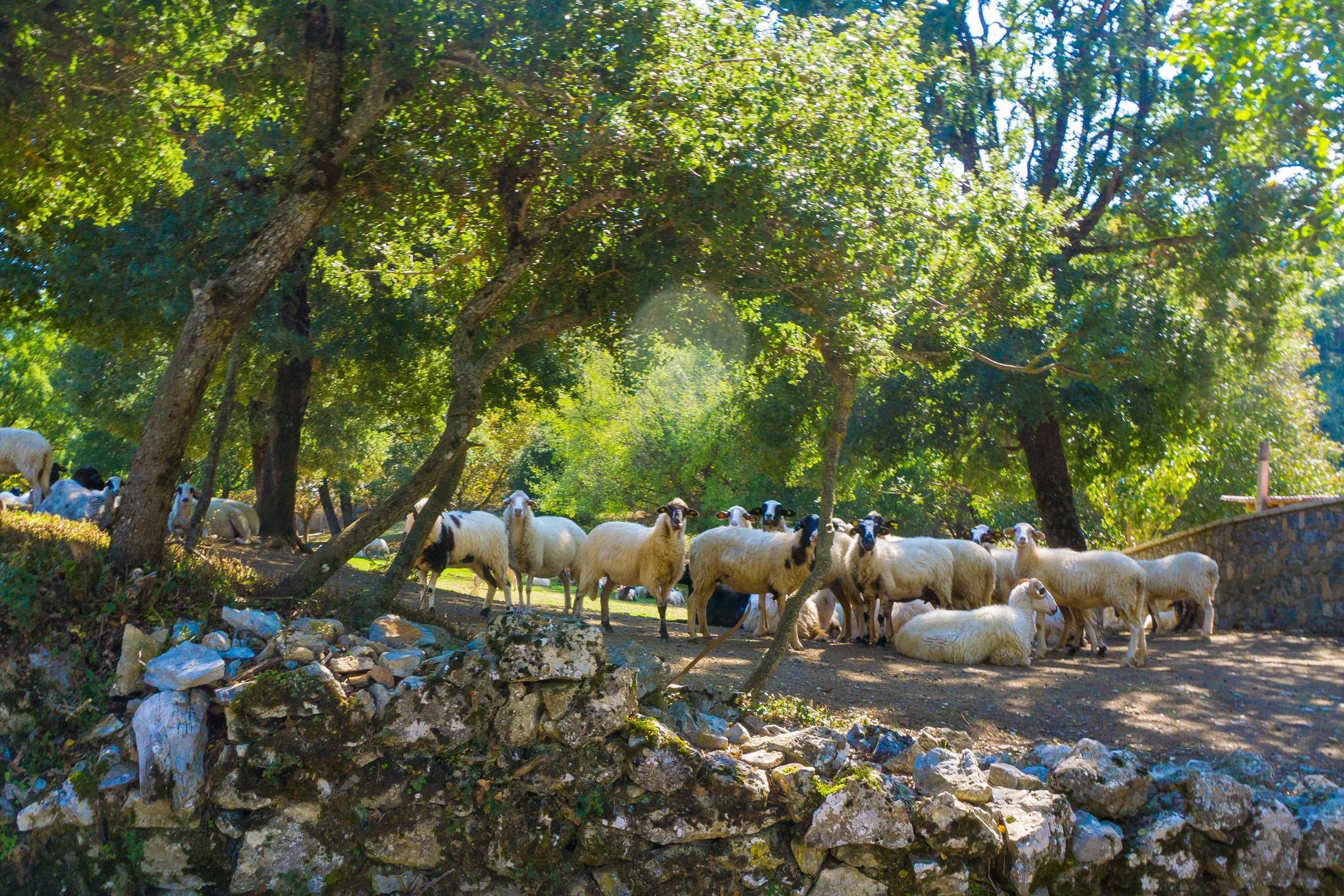
The Menalon Trail was actually the first trail in Greece to be certified by ERA - the European Ramblers’ Association - a network promoting hiking across the continent. The starting point is in Stemnitsa, a mountain village known for its churches and mansions, isolated 1,000m (3,280ft) up, roughly 150 miles (241km) west of Athens, the iconic capital of Greece. The trail then finishes in Lagadia, another scenic village on a mountain slope at a similar elevation.
“For me, the whole area is a highlight,” says Konstantinos Tsalkoutis, a destination expert, and the co-designer of Much Better Adventures' new journey through Peloponnese, which combines sections of the Menalon Trail with time snorkelling on the coast, and indulging in local olive oil and Nemean wines. “It's a special part of Greece and a special part of Peloponnese.
The whole area here - Arcadia and Peloponnese; it was here the revolution started.
“99% of the people who come to Greece are just impressed that we have mountains,” Konstantinos laughs. “For all these years, the marketing has been all beaches and ouzo and calamari. But when they see the mountains here, they say ‘wow’. Here, you can see dense forests at high altitudes, and then after one hour of driving you can be next to the beach - and then you can get your calamari.”

The historic settlement of Dimitsana, a post-card perfect village perched on a hill above Lousios Gorge, makes for a fine base for hiking. The town layers and laps, with cypress trees and bell towers poking out above the sloping red roofs.
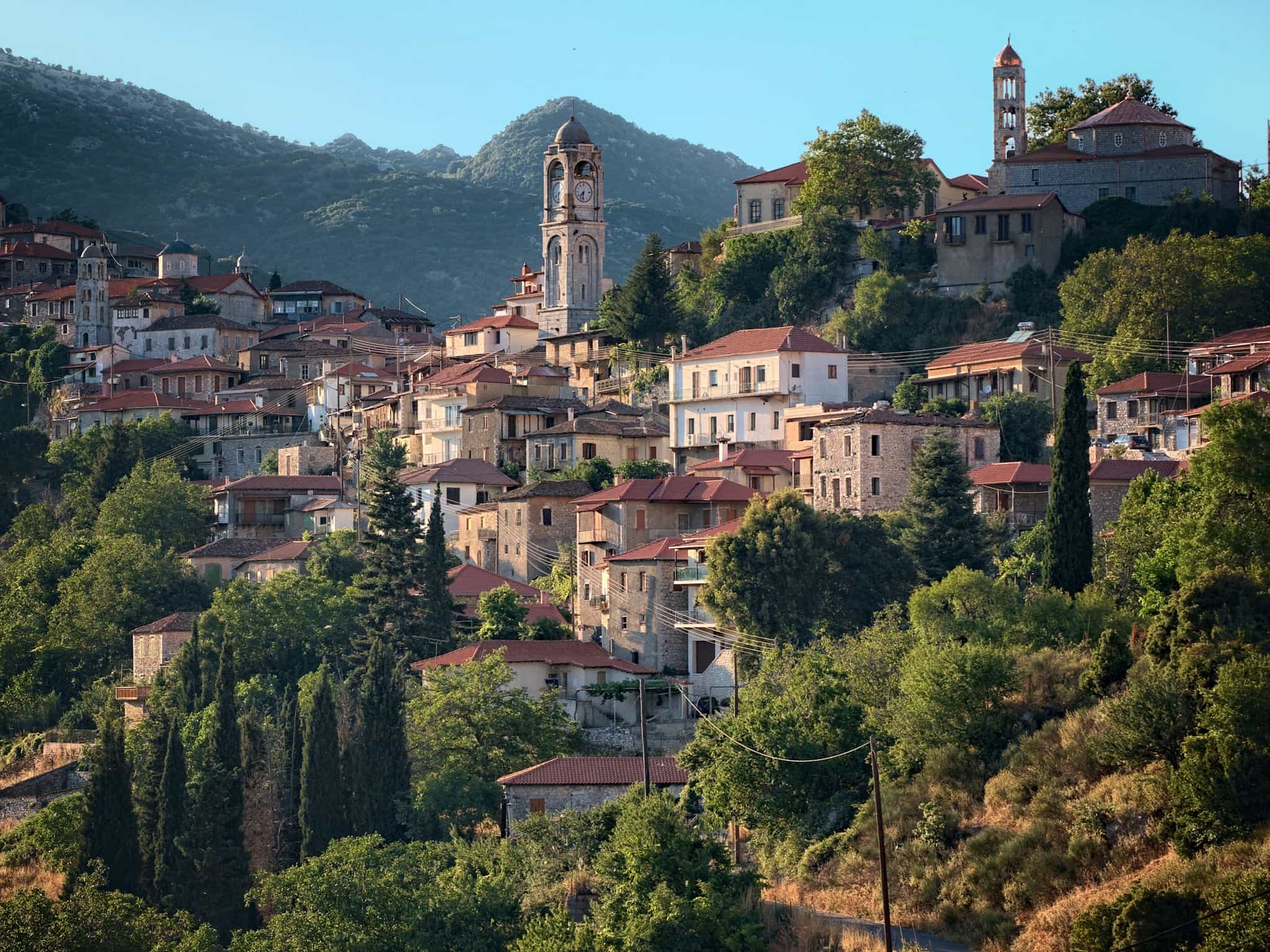
“Dimitsana is a really important village,” says Konstantinos. “You could say it’s the head of the mountain villages around. If you wanted to go to school or go shopping or find a doctor, you would leave the other villages and use parts of the Menalon hike to get to Dimitsana.
“It’s also important because it played a big part in the Greek Revolution against the Ottoman Empire, back in 1821.”
This was the revolution which led to the independence of Greece, which the Ottomans had taken control of after the fall of Constantinople in 1453. “They used to have water mills, and they produced gunpowder and flour here,” explains Tsalkoutis. Dimitsana became known as the nation's powder keg. “The whole area here - Arcadia and Peloponnese; it was where the revolution started.”

The Menalon Trail itself can be split into eight stages, and follows ancient mule tracks, once used by people walking between the villages and monasteries.
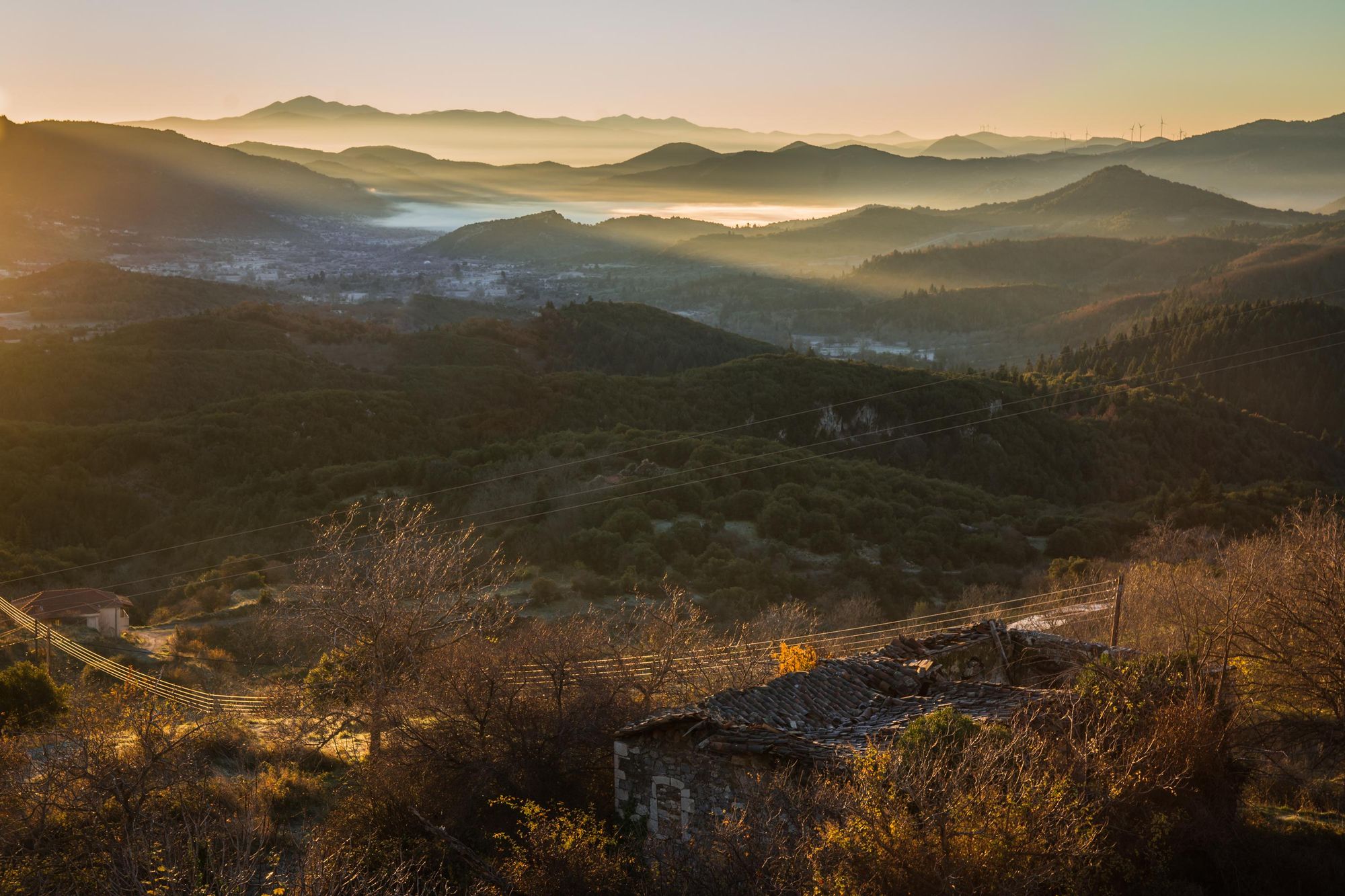
“It passes through a number of beautiful stone mountain villages,” Konstantinos says. “They used to be connected only with these hiking paths. Now there are also some roads. We use the paths to move around, and we explore the area.”
Along the way, walkers will follow rivers, tight forest trails and wide open plateaus. The peaks are typically high and bare, contrasting with the lush forest rivers and the long canyons which also punctuate this part of Arcadia.
Early highlights on the Menalon Trail include the Rapi Watermills and the Monastery of Panagia Kernitsa, near the village of Nympassia. One of Arcadia’s oldest, this was built on a clifftop 840m (2,755ft) around 1000 years ago. It’s still in use today (by women only) and overlooks an ocean of lush, green forest.
Cross the idyllic, stone Bridge of Tzavarena, en route to the highest village in the Peloponnese, Magouliana…
You'll walk to Vytina, a stacked town in the basin between two hills, built around 350 AD, and follow an old footpath to Mavra Litharia, an impressive limestone gorge. Here, you cross the idyllic stone Bridge of Tzavarena, en route to the highest village in the Peloponnese, Magouliana, at 1,365m (4,478ft). The village is built to face the sun all day long, mitigating the chilling impact of the altitude.
Off the trail, enjoy the tavernas - eat local bean soups, hearty goat dishes with lemon or tomato sauces, or trahana, a type of pasta. Arcadian wines are a standout, including the local take on Greece’s most famous red, Agiorgitiko.
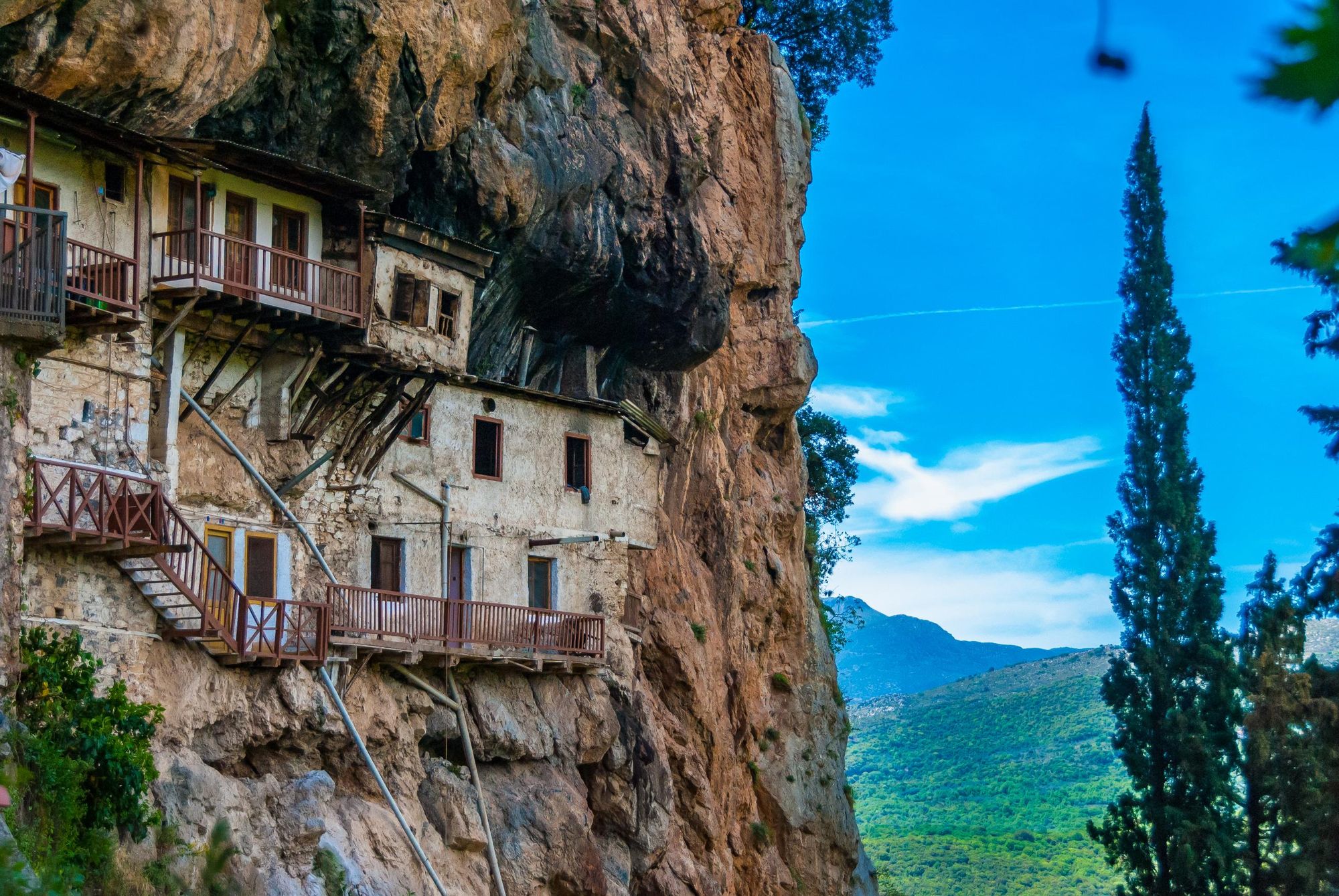
Walk the full Menalon route and you’ll later climb through forests to reach the Vlachika plateau, a sprawling mountain plateau, and finally descend into the Lousios Gorge, passing the Monastery of Prodromos, built into the cliff.

“For me, the beauty of Menalon is that we have really dense forests,” says Konstantinos. “We have dense fir trees at higher altitudes. Then when the elevation drops, we have olive trees and fruit trees like lemons and oranges, especially around Nafplio [a city off the Menalon Trail, on the coast of Greece], and vineyards - grapes, everywhere. There are really beautiful elements. We have waterways, rivers, and the stone-built villages are very, very traditional."
We have dense fir trees at higher altitudes. Then when the elevation drops, we have olive trees and fruit trees like lemons and oranges…
While the full route is mostly for hikers, parts are also accessible on bikes - and if you grab an e-bike, you can take some of the strain out of this hilly region.
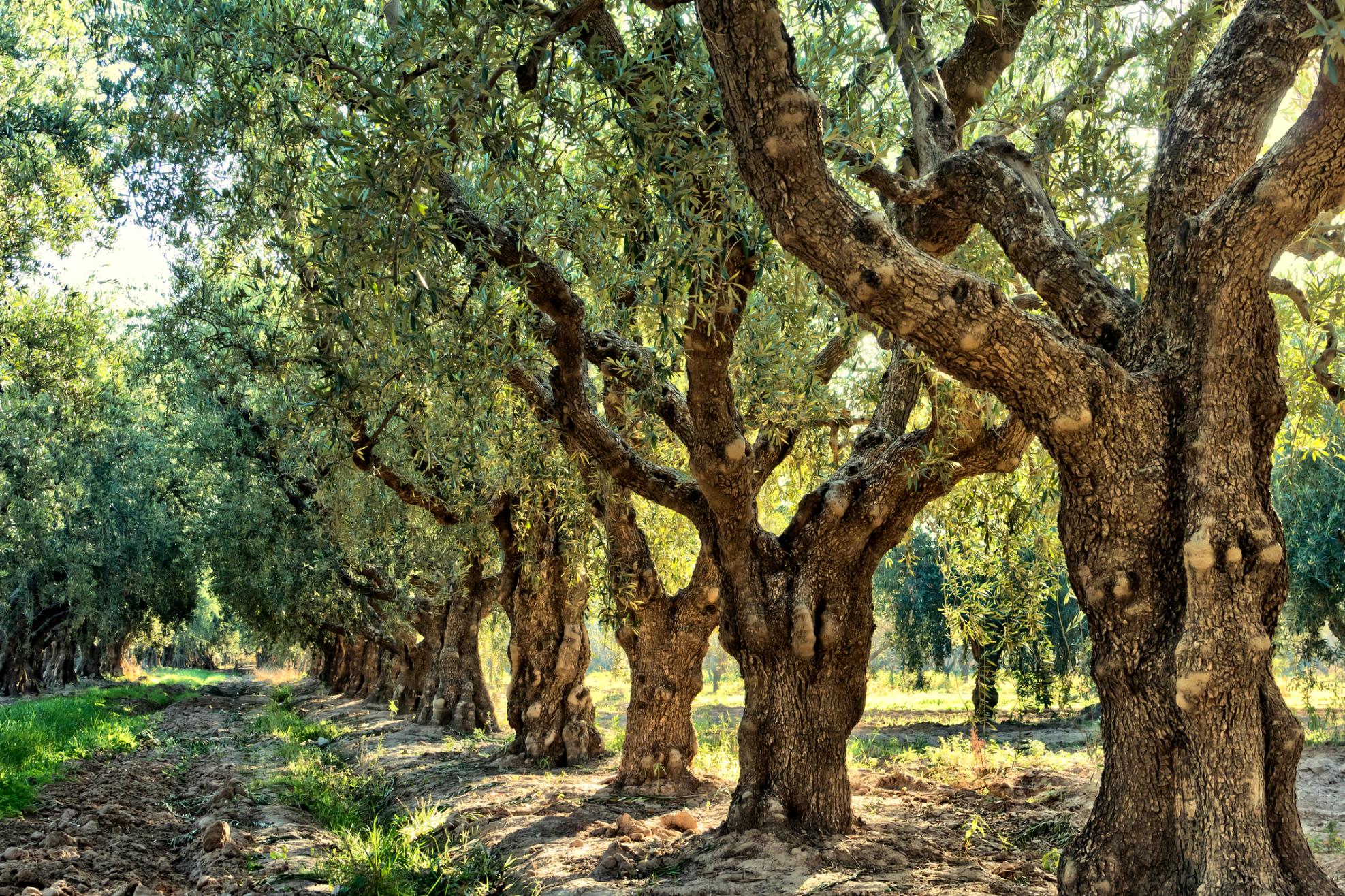
Look out for foxes, martens, weasels and hedgehogs plodding through the shrubs as you go. If you’re particularly attentive you may also spot bats darting around or shrews on the ground. Wild boars, reintroduced to the area in the past century, trot around, while jackals are occasionally sighted, looking for a meal.

“We have a lot of species of birds,” Konstantinos adds. Buzzards, kestrels and jackdaws circle up in the sky, while short-toed snake eagles are a more allusive local sighting. You may spot (or hear) woodpeckers in the forests of the Peloponnese, and you can also spot various species of nuthatch.
The beauty of Peloponnese is that, while you can explore all of this rugged beauty in-land - the glimmering the Aegean Sea is never far away. After hiking the Menalon Trail, continue to the coast - and get two sides to your Greek adventure.
Inspired? Walk Peloponnese and the trail on our wild Greek Adventure and browse the new Premium Collection now!

